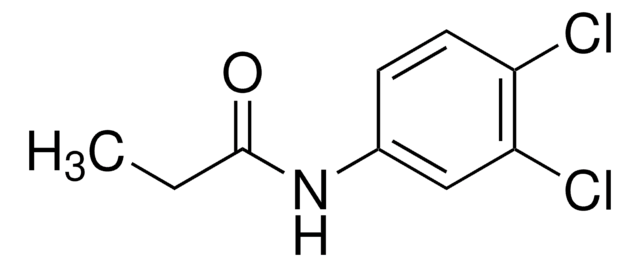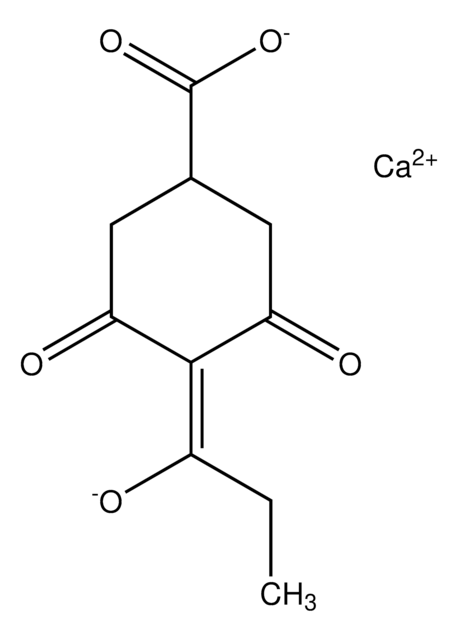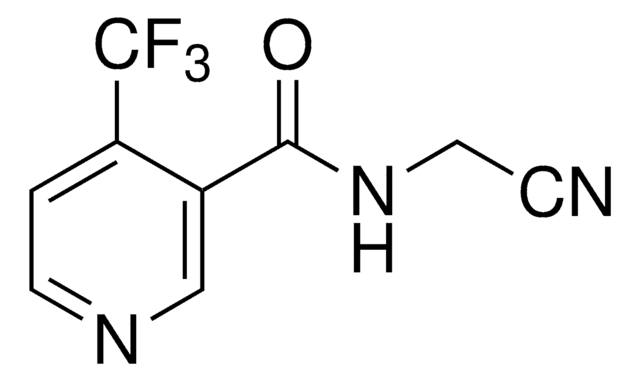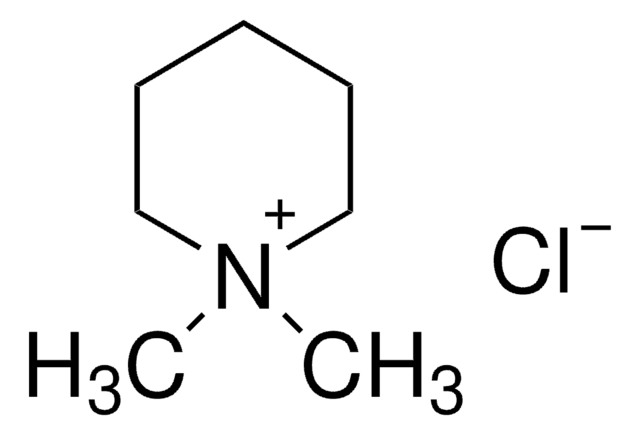06846
Chlorimuron ethyl
certified reference material, TraceCERT®, Manufactured by: Sigma-Aldrich Production GmbH, Switzerland
Sinónimos:
Ethyl 2-(4-chloro-6-methoxy-2-pyrimidinylcarbamoylsulfamoyl)benzoate
About This Item
Productos recomendados
grado
certified reference material
TraceCERT®
Nivel de calidad
Línea del producto
TraceCERT®
caducidad
limited shelf life, expiry date on the label
fabricante / nombre comercial
Manufactured by: Sigma-Aldrich Production GmbH, Switzerland
temp. de almacenamiento
2-8°C
cadena SMILES
CCOC(=O)c1ccccc1S(=O)(=O)NC(=O)Nc2nc(Cl)cc(OC)n2
InChI
1S/C15H15ClN4O6S/c1-3-26-13(21)9-6-4-5-7-10(9)27(23,24)20-15(22)19-14-17-11(16)8-12(18-14)25-2/h4-8H,3H2,1-2H3,(H2,17,18,19,20,22)
Clave InChI
NSWAMPCUPHPTTC-UHFFFAOYSA-N
¿Está buscando productos similares? Visita Guía de comparación de productos
Categorías relacionadas
Descripción general
Certified content by quantitative NMR incl. uncertainty and expiry date are given on the certificate.
Download your certificate at: http://www.sigma aldrich.com
Chlorimuron-ethyl is a member of sulfonylurea herbicides used wildly for pre- and post-emergence control of broad-leaved weeds in soybeans, maize, peanuts, beans, and other crops. It is characterized by very low application rates, high herbicidal activity, good crop selectivity, and low toxicity.
Chlorimuron-ethyl is an acetolactate synthase (ALS) inhibitor, that acts by inhibiting the biosynthesis of the essential amino acids like valine, leucine, and isoleucine. This stops the plant growth as cell division of growing roots and shoots tips are inhibited.
Aplicación
- To develop and validate an RP-HPLC method for the determination of metsulfuron-methyl, chlorantraniliprole, and chlorimuron-ethyl residues in stems of Oryza sativa
- To study the rate of biodegradation of chlorimuron-ethyl using Pseudomonas sp. LW3 in liquid culture and contaminated soil
- To investigate the toxicological effects of chlorimuron-ethyl, cadmium, and copper on germination rate and shoot and root elongation of wheat Triticum aestivum
- Study the effect of chlorimuron-ethyl on physiological mechanisms in wheat and identify valuable biochemical biomarkers for the pollution of chlorimuron-ethyl in soil-plant systems
- Study the biochemical responses to joint stress of chlorimuron-ethyl and cadmium in wheat Triticum aestivum
- To study the photolysis of chlorimuron-ethyl on a soil surface, under sunlight and UV light
- To determine the photodegradation kinetics of chlorimuron-ethyl in an aqueous solution under sunlight and UV light
Productos recomendados
Información legal
Palabra de señalización
Warning
Frases de peligro
Consejos de prudencia
Clasificaciones de peligro
Aquatic Acute 1 - Aquatic Chronic 1
Código de clase de almacenamiento
11 - Combustible Solids
Clase de riesgo para el agua (WGK)
WGK 3
Punto de inflamabilidad (°F)
Not applicable
Punto de inflamabilidad (°C)
Not applicable
Elija entre una de las versiones más recientes:
Certificados de análisis (COA)
¿No ve la versión correcta?
Si necesita una versión concreta, puede buscar un certificado específico por el número de lote.
¿Ya tiene este producto?
Encuentre la documentación para los productos que ha comprado recientemente en la Biblioteca de documentos.
Nuestro equipo de científicos tiene experiencia en todas las áreas de investigación: Ciencias de la vida, Ciencia de los materiales, Síntesis química, Cromatografía, Analítica y muchas otras.
Póngase en contacto con el Servicio técnico









